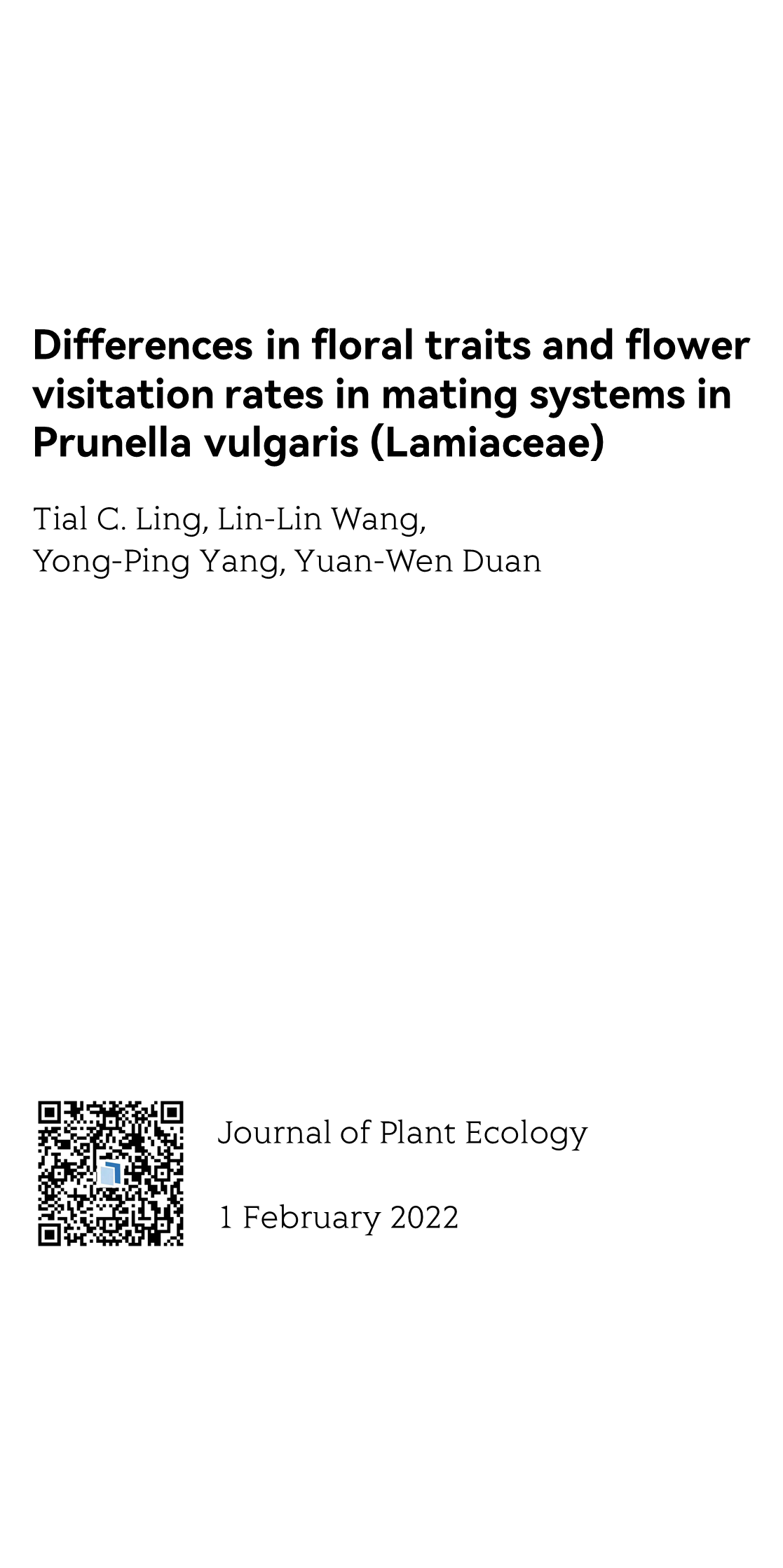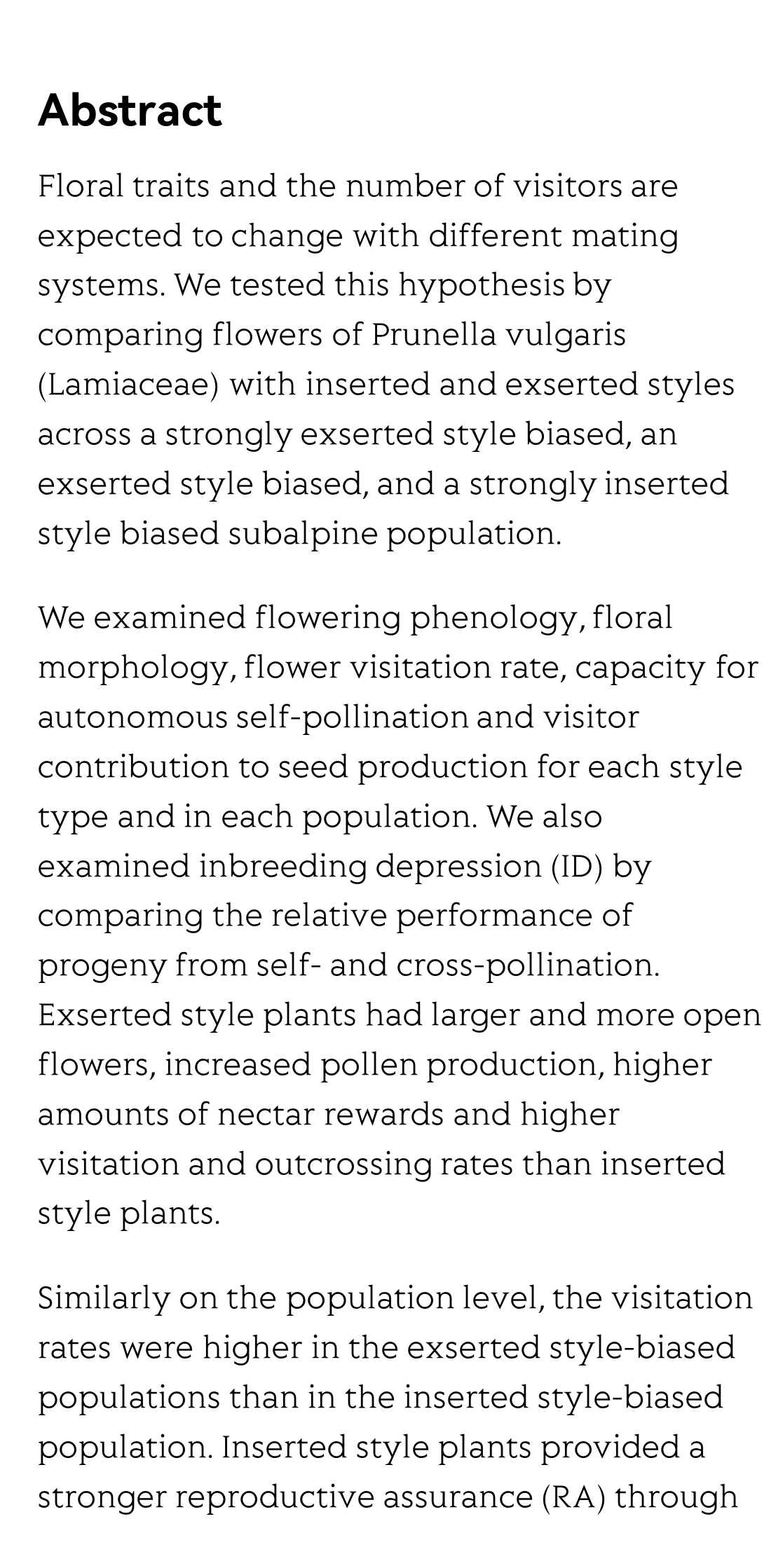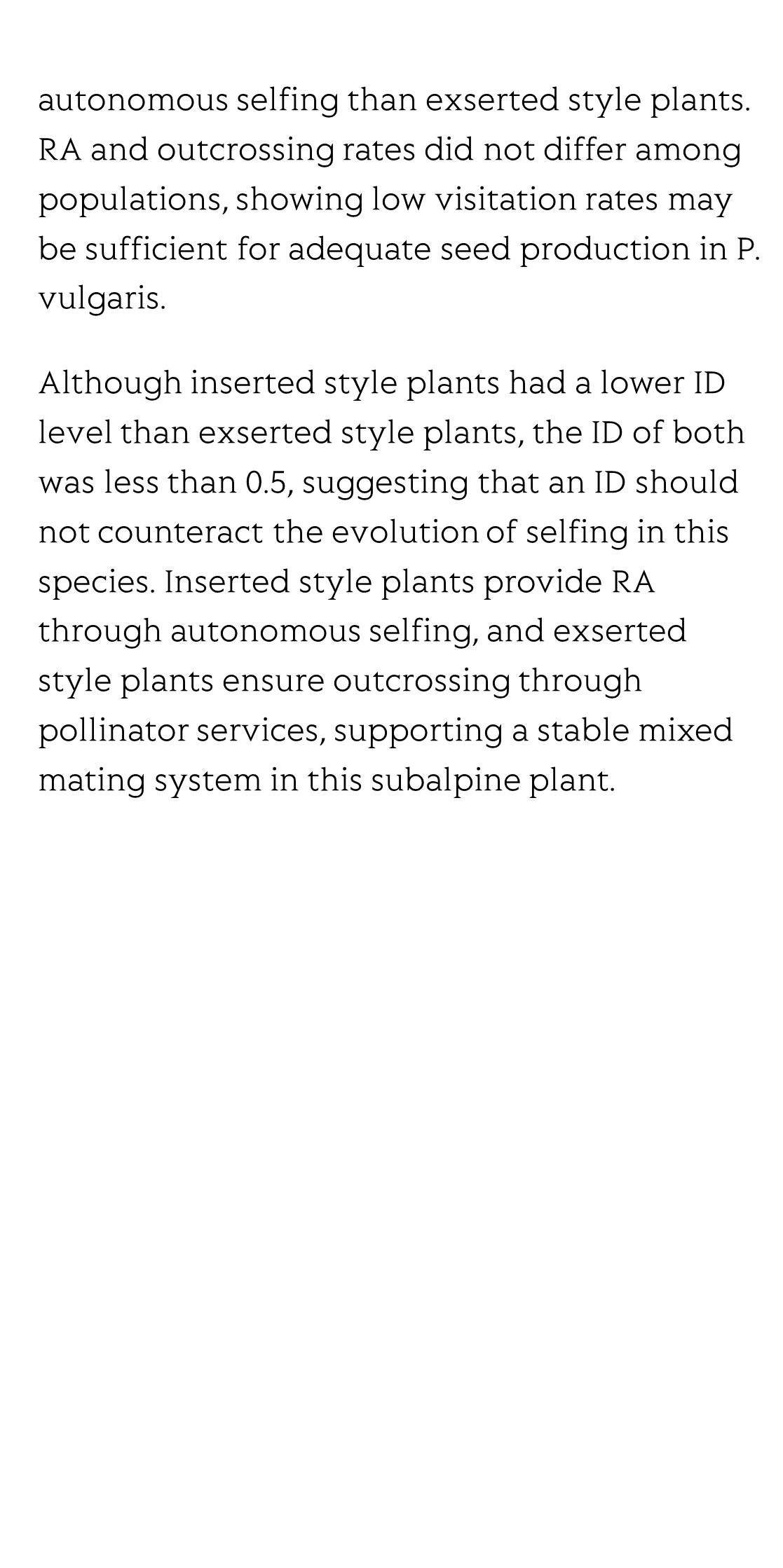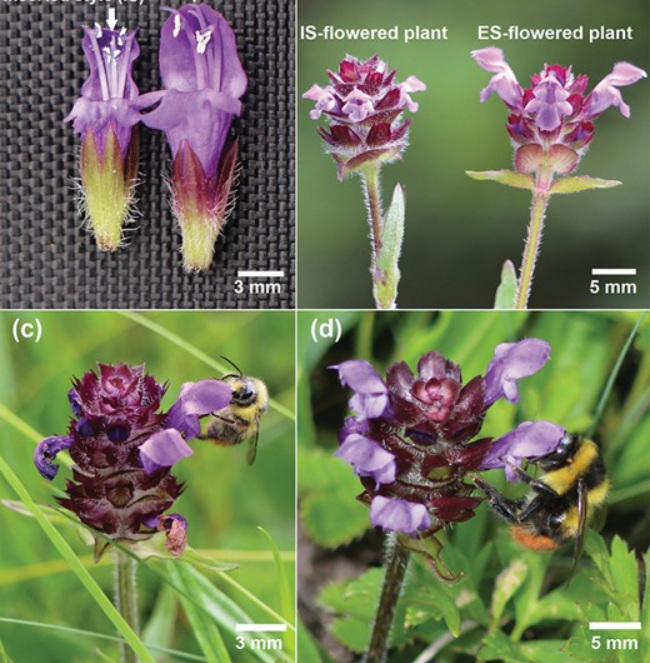(Peer-Reviewed) Differences in floral traits and flower visitation rates in mating systems in Prunella vulgaris (Lamiaceae)
Tial C. Ling ¹ ² ³ ⁴, Lin-Lin Wang 王林林 ¹ ² ³, Yong-Ping Yang 杨永平 ¹ ², Yuan-Wen Duan 段元文 ¹ ²
¹ CAS Key Laboratory for Plant Diversity and Biogeography of East Asia, Kunming Institute of Botany, Chinese Academy of Sciences, Kunming 650201, China
中国 昆明 中国科学院昆明植物研究所 东亚植物多样性与生物地理学重点实验室
² Institute of Tibetan Plateau Research at Kunming, Kunming Institute of Botany, Chinese Academy of Sciences, Kunming 650201, Yunnan, China
中国 云南 昆明 中国科学院青藏高原研究所昆明部
³ University of the Chinese Academy of Sciences, Beijing 100049, China
中国 北京 中国科学院大学
⁴ CAS Key Laboratory of Tropical Forest Ecology, Xishuangbanna Tropical Botanical Garden, Chinese Academy of Sciences, Menglun 666303, China
中国 勐仑 中国科学院西双版纳热带植物园 热带森林生态学重点实验室
Abstract
Floral traits and the number of visitors are expected to change with different mating systems. We tested this hypothesis by comparing flowers of Prunella vulgaris (Lamiaceae) with inserted and exserted styles across a strongly exserted style biased, an exserted style biased, and a strongly inserted style biased subalpine population.
We examined flowering phenology, floral morphology, flower visitation rate, capacity for autonomous self-pollination and visitor contribution to seed production for each style type and in each population. We also examined inbreeding depression (ID) by comparing the relative performance of progeny from self- and cross-pollination. Exserted style plants had larger and more open flowers, increased pollen production, higher amounts of nectar rewards and higher visitation and outcrossing rates than inserted style plants.
Similarly on the population level, the visitation rates were higher in the exserted style-biased populations than in the inserted style-biased population. Inserted style plants provided a stronger reproductive assurance (RA) through autonomous selfing than exserted style plants. RA and outcrossing rates did not differ among populations, showing low visitation rates may be sufficient for adequate seed production in P. vulgaris.
Although inserted style plants had a lower ID level than exserted style plants, the ID of both was less than 0.5, suggesting that an ID should not counteract the evolution of selfing in this species. Inserted style plants provide RA through autonomous selfing, and exserted style plants ensure outcrossing through pollinator services, supporting a stable mixed mating system in this subalpine plant.
Flicker minimization in power-saving displays enabled by measurement of difference in flexoelectric coefficients and displacement-current in positive dielectric anisotropy liquid crystals
Junho Jung, HaYoung Jung, GyuRi Choi, HanByeol Park, Sun-Mi Park, Ki-Sun Kwon, Heui-Seok Jin, Dong-Jin Lee, Hoon Jeong, JeongKi Park, Byeong Koo Kim, Seung Hee Lee, MinSu Kim
Opto-Electronic Advances
2025-09-25
Dual-frequency angular-multiplexed fringe projection profilometry with deep learning: breaking hardware limits for ultra-high-speed 3D imaging
Wenwu Chen, Yifan Liu, Shijie Feng, Wei Yin, Jiaming Qian, Yixuan Li, Hang Zhang, Maciej Trusiak, Malgorzata Kujawinska, Qian Chen, Chao Zuo
Opto-Electronic Advances
2025-09-25







